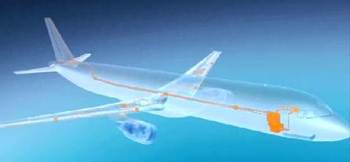Apr 19 2013
The ability to measure multiple sensing points over large intricate surfaces can be a difficult task. Traditionally engineers have used electrical strain gauges to monitor many points over a structure such as an aircraft wing or large composite component. However applying many individual gauges is both time consuming and adds significant weight to the structure in the form of cabling.

Fiber optic sensing techniques make this task easier by combining many sensors on a single fiber. However with the launch of the FBGS ‘All Grating Fiber’ it is now possible to position sensors adjacent to one another, making it possible to monitor changes throughout the complete structure and see how mechanical influences at one point can affect another.
DTG-LBL-1550-AGF is a low bendloss fiber with densely spaced Draw Tower Gratings (DTG®s) over the full length of the fiber. It is designed to be used with an OFDR (optical frequency domain reflectometry) system that allows fast and precise measurements over a wide strain or temperature range with spatial resolution down to a few mm over the entire fiber length.
The chain can be configured such that more than 95% of the fiber contains gratings and the wavelength can be adjusted between 1510nm and 1590nm - and can vary within the array. The fiber is produced using a process that combines the drawing of the optical fiber with the writing of a Bragg grating. This process of simultaneously drawing the fiber and writing the grating results in spliceless, high strength FBG chains. The fiber coating is applied directly after the grating inscription and as such the commonly used stripping and recoating process of standard FBG’s is not necessary and the pristine fiber strength is maintained throughout the DTG manufacturing process.
The ability to build a high density of FBG’s into a single fiber with extremely high mechanical strength compared to conventional gratings, means sensing in harsh environments over large areas with a high resolution of measurement is now possible. With a breaking strength of >5% strain and a temperature operating range from -180°C to +200°C andalthough originally developed for use in the aerospace industry, the capabilities of the DTG fiber are also suited for structural testing within composites, automotive and the wind industry.
FBGS uses a unique method to develop and manufacture its optical sensing fiber. Through this draw tower production process, the position, the wavelength and number of gratings (sensors), can be selected to suit most sensing applications, without special conditions, inflated pricing or extended delivery.